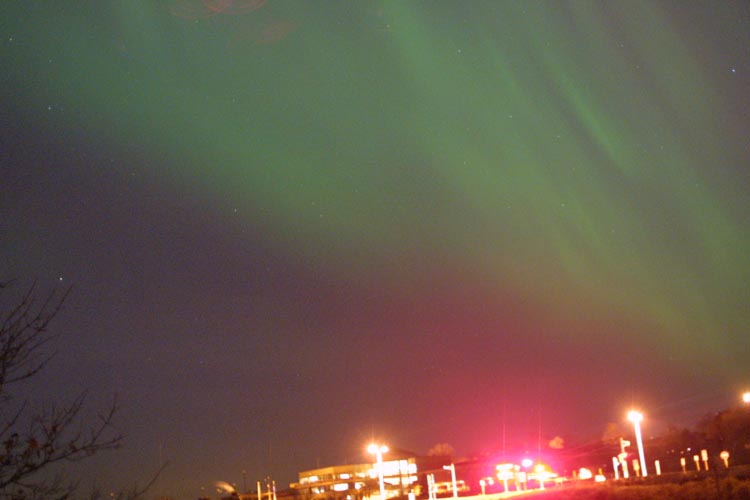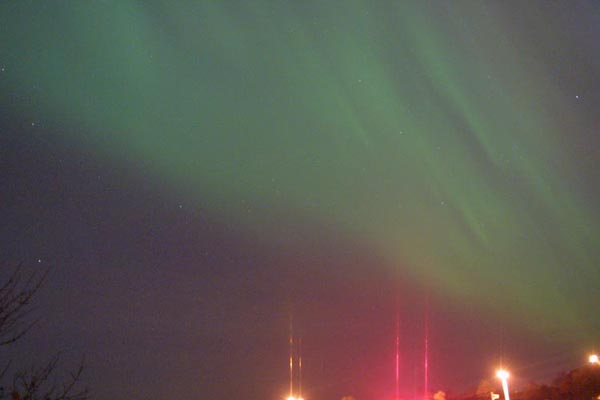
|

|

|

|
The Aurora Borealis rarely extend down to my latitude,
but when they do, it is a spectacular sight. The sky is lit up like a light
bulb, or more accurately, like a neon tube.
The brightness of the display may be gauged by the fact that my camera was
able to take these great shots, while still not washing out the buildings,
and lights of the city.
|

|
A shot, straight up into the sky, showing the greens,
yellows, and reds that are part of the display. Experts on the subject, say
that the different colors are indications of the elevation, and gases involved
in the display.
|

|
A look over a nearby apartment building gives some
sense of scale to the display. The entire sky seemed to be filled with scintillating,
shifting streamers of light.
|

|
Left:
Another view over the same building. Note that the position of the display
has shifted, along with it's shape.
Below:
A neighborhood, view shows the Auroras streaming over head.
Bottom:
An overhead view shows the Pleadies, and the planet Mars, as they
shine through the Auroras. The newly discovered tenth planet, Sedna, is also
in this view, though far too dim to see.
|

|

|

|
This is the moon, rather early on a fall night. It
is barely a crescent, but a long enough exposure shows it's dark side. It
is night, on the dark side, and what little light there is, comes from the
earth, nearly full now, in the lunar night sky. The blurred elongation visible,
particularly on the lit portion, is from the motion of the moon in the night
sky, during this eight second time exposure. I had no clock drive; this photo
was taken through a 500mm lens mounted on my camera.
|

|
This is a photo of the conjunction of the moon and
Venus. Actually, it is a near conjunction, as the two have not yet come together.
Since Venus is higher in the sky, this would be a superior conjunction of
Venus.
|

|
A little bit lower shutter speed, over exposes the
two, but lets a few stars show, and lights up the dark side of the Moon just
a bit.
|